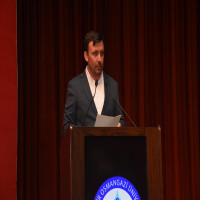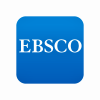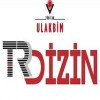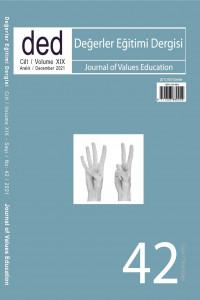Research Article
Aim & Scope
Journal of Values Education is an interdisciplinary refereed academic journal published twice a year (June and December). The Journal of Values Education publishes research on religion, ethics, values and character education, original research subjects, experimental and descriptive studies in other related fields of social sciences are also being published. The journal aims to be an academic platform for studies with scientific qualifications at national and international level in subjects covering religion and values education.
In the field of Social Sciences and Humanities, the Journal of Values Education publishes original studies within the frame of religious and educational research (values education, spiritual education, spiritual counselling, religious education, moral education, character education).
Author Guidelines
Author Guidelines
Writing Format and Style
File Naming: The article file must be uploaded under the name of “Author Version” to an electronic submission website DergiPark.
Page Layout:
A4 paper size;
2,5 cm left and right edges, top, and bottom edges
Must align on both sides
Paragraphs should be indented 0,5 cm
Paragraph Structure:
Click the “Line and Paragraph Spacing” button, then select Before or After space 6 nk and 1,5 line spacing option
Writing Fonts: Times New Roman, 12-point font size for text and main headings. 10-point font for footnotes
Word Limit: Manuscript should not exceed 8,000 words.
Order of Parts in the Article
Title: The title of the article must be written in bold and center-aligned. The first letter of each word in
heading should be capital, except words such as; a, the, is, to, and so on.
Authors’ Name: Submitted articles shall always include the authors’ names, as the the submission and review
process is done on electronic submission website DergiPark. Accordingly, articles with no author names will not be processed for review and will be returned to authors.
Abstract: The abstract should be 200 words, not containing any citations or quotations. with 10-point font size.
Keywords: The Keywords should be between 3-5 words.
After the abstract and the keywords in Turkish, the abstract and the keywords should also be in English.
Main Text:
Experimental, quantitative and qualitative studies should include Introduction, Methods, Results, Discussion sections.
Experimental, quantitative and qualitative studies should include sub-sections such as sample/study group /data source, data collection tools, data analysis in the method section.
Literature review type of studies should clearly state the problem, analyze the relevant literature in a competent way, focus on the deficiencies and contradictions in the literature with stating the steps to be taken for solution.
The parts of the text which are to be emphasized should not be in bold instead emphasis must be shown in italics or quotation marks (“ ”).
Direct quotations are indented from left according to the main text and must be in 11 font size. Should not shown in italics or quotation marks.
No paragraph spacing between bullet points.
Referencing and Bibliographies:
for in-text citations and bibliography is
done according to the rules in the guideline book of the 7th edition of
the Publication Manual of the American Psychological Association
(APA). For summary information about writing rules click here.
Footnotes are
only used for making additional information about the text.
English Section:
This section of the article includes the English title and extended abstract/summary (1500 words).
Tables, Figures and Appendices:
Elements like; table, shape, picture, graphics etc. should be included in the text.
The tables, figures, pictures,
graphics should stay within the page margins. For easier use and to prevent
graphics and pictures to exceed the page they should stay within 10x17 cm area.
The original files of pictures and graphics to be used in studies should be
saved separately from the text. Figures and images should be in high
resolution.
Tables
and graphics should not be in image format.
The
Journal of Values Education has a specific table template. Tables should be
prepared in accordance with this template. Click here for the table template.
Line spacing in tables and figures must be single spacing. Smaller point sizes can be used if necessary.
Appendices Section: Each appendix must be given on separate pages after the bibliography.
Heading Format
Headings must not be
labelled with number or letters.
Level
1 headings include; introduction, Method, Results, and Discussion.
It is
not recommended to create more than four levels.
Article Heading: Headings initial letters should be capital, except words such as; a, the, is, to, and so on.
1st level Heading: Uppercase, center aligned, boldface. The paragraph after the heading is aligned left. The second paragraph and the subsequent paragraphs 0.5 cm indented.
2nd level Heading: Uppercase, center aligned, boldface. The paragraph after the heading is aligned left. The second paragraph and the subsequent paragraphs 0.5 cm indented.
3rd Level Heading: Uppercase, 0.5 cm indented, bold. The paragraph after the heading is aligned with the heading which means 0.5 cm indented.
4th Level Heading: Uppercase, 0.5 cm
indented, boldface and italic. With a period. The title
and the text remain on the same line.
Charts and Table Titles: charts and tables are referred to as (Table 1, Chart 1, ...). The title is uppercase. The table header is written inside the first cell in the table.
You can find the article writing template here
Ethical Principles and Publication Policy
Journal of Values Education, published by Ensar Neşriyat (Istanbul / Turkey). Journal of Values Education is published biannually every (25 June and 25 December).The ethical duties and responsibilities of The Journal of Values Education have been prepared based on the recommendations and guidelines developed by the Committee on Publication Ethics (COPE).
Journal of Values Education is an Ensar Neşriyat publication. The publisher must observe the following ethical responsibilities below and act accordingly:
• Editors are responsible for all the processes that the manuscripts submitted to the Journal of Values Education will go through. Within this framework, regardless of the economic or political interests, the decision-makers are the editors.
• The publisher should guarantee an independent editorial decision.
• Protects the property and copyright of every article published in the Journal of Values Education, and keep a record of every published copy.
• The publisher bears the responsibility to take the necessary precautions against all kinds of scientific abuse, fraud and plagiarism.
• The publisher does not charge authors any fee for submitting articles.
Responsibility for Journal Content
Editor/Editors are responsible for each study published in the Journal. They should ensure the quality of the material they publish and maintain the integrity of the published record. In this respect, the editor/editorial board have the following roles and responsibilities:
• Editors should make decisions on academic merit alone and take full responsibility for their decisions.
• In order to evaluate the works fairly and impartially, editors should act in accordance with the principle of intellectual freedom.
• Following the procedures without making concessions on intellectual property rights and ethical standards.
• Making efforts to meet the demand for knowledge from readers and authors, and ensuring the continuous development of the journal.
• Keep the referee’s credentials confidential, and manage the review process accordingly.
• To improve the ways of journal processes, the editor should actively seek the views of editorial board members, reviewers, and authors.
• Editor should stay up-to-date with the latest researches related to refereeing and publishing, and reviews the journal processes in the light of new information.
Relations with the Readers
• Editor/Board of editors should ensure that the published articles are original and make a contribution to readers, researchers, practitioners and the scientific area.
• Editor/Editorial Board have the responsibility to pay attention to the feedbacks from readers, editors and practitioners, and to report back in an explanatory and informative way.
Relations with Authors
• Editor/Board of editors should ensure that all the manuscripts will not go to the most appropriate and best-qualified reviewers.
• To avoid deviations from pre-determined processes, editor/editorial board must put efforts to be constantly in communication with the author.
Relations with the Referees
• During the appointment of the referee, the editor/board of editors should monitor if there is a conflict of interest between the authors and the referees.
• Since the evaluation procedure is based on a blind peer review method, editors should keep the referee’s credentials confidential. List of referees is announced on the December issue of the given year.
• Referees should be encouraged to use an impartial, scientific and objective language when evaluating the manuscripts.
• Necessary works should be done to ensure that the referee pool is composed of different disciplines and constantly updated.
• Unkind and unscientific evaluations should be prevented.
Process of Refereeing and Evaluation
• Editor/Board of editors; is obliged to apply the refereeing and evaluation process policies. In this context, the editor/board of editors should ensure the completion of the fair, impartial and timely evaluation process for each work.
• Referees can make a definite opinion about whether the study is publishable or not in the reports they prepare. However, the editor/board of editors can make a decision upon the similar and opposite opinions of other referees who evaluated the study.
• The editor/board of editors considers the strength of the arguments of the referees or authors, rather than the number of referees who have accepted or rejected the given study. The editor/board of editors considers reports with strong, justified propositions rather than reports with evaluation questions answered with mere yes or no.
• The referee may see that his/her views are not fully reflected in the study after publication. It is possible that other referees have different opinions and that the Editor/Board of editors has taken these views into consideration. In this case, upon the request of the referee evaluating the work, the opinions of the other referees may be sent to the referee if the Board of editors deems appropriate.
• According to the recommendations of the referees, the editor/board of editors follows one of the following ways:
- Publish the work.
- Accept partial and significant changes and improvements to the publication.
- Can ask the author (s) to reorganize the work in accordance with the opinion of the referee and initiate a new evaluation process.
- He may reject the work.
Relations with Field Editors and Editorial Board Members
• Identify suitably qualified field editors and editorial board members who can actively contribute to the development of the journal.
• Field editors and editorial board members are reviewed regularly.
• The Editor ensures that all members advance the processes in accordance with their editorial policies and guidelines. It informs members of the editorial board about the publishing policies and developments.
• The activities of field editors and editorial board members are evaluated impartially and independently.
• The editor sends the works that are appropriate within their area of expertise of the field editors and editorial board members for evaluation.
• The editor receives ideas from the fields editors and editorial board members about the management of the journal, reports the changes occurred in journal policies, and consults them for future plans.
Relationships with the Journal’s Owner and Publisher
The relationship between editors and the publisher is based on the editorial independence principle. In accordance with the written agreement between the editors and the publisher, all the decisions of the editors are independent of the publisher and the journal owner.
Protection of Personal Data
• For editor/board of editors; if the explicit consent from individuals who used personal data is their studies not available, they should reject the work.
• Editor /board of editors is responsible for protecting the personal data of the referees and readers.
Ethics committee, Human and Animal Right
• Editors/board of editors are obliged to ensure the protection of human and animal rights in the evaluated studies.
• Editors are responsible for refusing the study in cases where there is no Ethics Committee approval for subjects used in studies or permit for experimental research.
Protection of Intellectual Property Rights
Editors/ board of editors are responsible for protecting the intellectual property rights of all the articles published in the journal and the rights of the journal and author(s) in cases where these rights are violated.
Constructiveness and Openness to Discussion
• Editors/ board of editors must pay attention to the convincing criticism about studies published in the journal and must have a constructive attitude towards such criticism.
• Editors must grant the right of reply to the author(s) of the criticized study.
• Editors must not ignore or exclude the study that include negative results.
Complaints
Editors/board of editors must examine the complaints from authors, reviewers or readers and respond to them in an explanatory manner.
Political and Economic Apprehensions
Neither the owner of the journal, publisher or any other political or economic factor can influence the independent decision taking of the editors.
Conflicting Interests
Editors/board of editors, acknowledging that there may be conflicting interests between referees and other editors, guarantee that the publication process of the manuscripts will be completed in an independent and unbiased manner
• The Journal of Values Education Editorial Board (hereinafter, referred to as “Editorial Board”) and the editor/ board of editors are responsible for each article submitted to the Journal of Values Education, including the processes after its publication.
• Editorial Board ensures the determination and implementation of journal policies such as publication, blind review, evaluation process and ethical principles.
• Putting the article into the referee process by the Editorial Board does not imply or guarantee that it will be accepted for publication. Even if the review process come out with positive decision for the publication, the Editorial Board and the Board of Editors have the final say.
• Editorial Board promotes academic integrity. The Editorial Board ensures the authenticity of the written works by inspecting them through the iThenticate plagiarism prevention software before publication.
• The Editorial Board always examines the claims of plagiarism and abuse in regard to published articles. In case it is established that an author committed plagiarism, or used copyrighted material that belongs to third parties without proper and full reference and permission, The Editorial Board reserves the rights, including but not limited, to retract the article, inform the author’s head of department, dean of faculty and/or other academic institutions.
The Journal of Values Education evaluation process is carried out with double-blinded peer-review principle. Referees cannot communicate directly with the authors, and reviews and comments are transmitted through the magazine management system. In this process, the evaluation forms and referee comments on the full text are transmitted to the authors by the editor. In this context, it is expected that referees will have the following ethical responsibilities:
• They only accept work evaluation related to the field of specialization.
• They should evaluate within impartiality and confidentiality.
• If they think they are facing a conflict of interest during the evaluation process, they should inform the editor of the journal, refusing to review the work.
• In accordance with the Privacy Principle the studies they asses can only be used after publication.
• They should objectively evaluate only the content of the study. They should not allow nationality, gender, religious beliefs, political beliefs and commercial concerns to influence assessment.
• They should do assessment in a constructive and polite language. They should not make humiliating personal comments that include hostility, slander and insults.
• They should carry out the work on which they have accepted the assessment on time and within the framework of ethical responsibilities mentioned above.
Author(s) sending works to The Journal of Values Education are expected to conform to the ethical responsibilities below:
• Author(s) are expected to send works that are unique. In case author(s) utilize other works or include other works, they are required to refer and/or quote fully and correctly.
• Individuals who do not intellectually contribute to the contents during the creation of the work must not be cited as authors. It is against the ethics of science to add people who do not have academic contribution as additional authors, or to rank authors with nonscientific criteria such as title, age and gender regardless of their contributions.
• Situations and relationships of all works sent to be published that could constitute a conflict of interest if any must be disclosed.
• Raw data may be requested of author(s) in the scope of evaluation processes, in such a case author(s) must be prepared to submit the expected data and information to the editorial board.
• Author(s) must possess a certificate that they have the right to use the data, the necessary permits regarding the research/analyses or the permission of the respondents that are queried.
• In case author(s) notice an error or mistake that is published or is in the early appearance or evaluation stage, they are responsible to notify the journal editor or publisher or to cooperate with the editor in the procedures of notifying the journal editor or publisher, correction or retraction.
• Author(s) may not apply their works to more than one journal. Each application may be initiated upon the completion of the previous application. Works that are published in another journal may not be submitted to the Journal of Values Education.
• Changing of the author liabilities (such as adding authors, switching the order of the authors, excluding authors) of any works whose evaluation process started cannot be proposed.
• It is assumed that the authors who submitted articles to the journal have read and accepted the ethical rules and publication principles and writing guidelines of the journal.
• In studies requiring ethics committee permission, information about the permit (name of the committee, date and number) should be included in the method section as well as on the first/last page of the article. In the case reports, it is necessary to include the information that the informed volunteer consent form is signed in the article.
The authors, who submit their works to the Journal of Values Education, acknowledge that their works are original and properly cited.
Plagiarism is a violation of ethics, regardless of whether it is intentional or not. It is a criminal offense, unacceptable as well as it is unethical to have similar study to other resources without citing the sources. For this reason, the Journal of Values Education obliges a plagiarism inspection for all of the works that are going to be published.
The articles sent to the journal are expected to comply with journal writing rules, spelling-writing errors, and other general rules. The articles sent to the journal are sent to the editor and editorial board for screening them if they meet the aforementioned requirements, then they are put through scanning software (currently iThenticate program). Screening the main text of the article while excluding bibliography and references, the similarity with other texts without citing the source should not exceed 18%. In case of having 10-30% similarity rate, the author is contacted and the manuscripts;
1- Will be sent by the editor to the author for rework.
2- May get rejection from editor.
3- Can be sent to the editorial board for the inspection about the reasons of similarity.
However, if the similarity rate without citing the source exceeds 30% the article is rejected, when the similarity rate with sources cited is more than 35%, the article could be rejected considering that the study is weak in terms of originality and contribution to the field.
The author bears the legal responsibility of the article published in the Journal of Values Education. If the reader notices an important error or mistake or if s/he has any complaints about editorial content (plagiarism, duplicate publication, etc.), he/she should raise their concern by writing via email sent to ded.dergi@gmail.com
Apart from the readers, one of the stakeholders can also report their concern via email in case encountering behavior or content that does not comply with the ethical responsibilities mentioned above.
The Journal of Values Education acts in accordance with COPE rules in the face of allegations and suspicions of alleged misconduct, citation manipulation and data fraud.
• Articles submitted to the Journal of Values Education, should be based on original research that adds to the field.
• The article submitted to the journal must not have been published previously or be currently under consideration or review elsewhere. Papers presented at scientific meetings would be accepted provided making the necessary explanations.
• An author should submit only one manuscript for the same issue of the journal.
• All the scientific and legal responsibilities of the published work belong to the author.
Language of publication
Journal of Values Education accepts Turkish and English language articles. Articles should include English title, Öz/ abstract (200 word), keywords (3-5 concepts), extended abstract / summary (1500 words) and a bibliography in the APA-style.
The Reference List and Citations Style
Sources used in both references list and in-text citation must conform to the rules of Manual of the American Psychological Association (APA),7th edition, published by American Psychological Association.
Articles will be ready for publication, after undergoing a three-stage evaluation process of preliminary review, assessment, and correction.
Preliminary Review
• The article submitted for publication is first examined in terms of its compliance with the journal’s publication policy. As a result of this preliminary evaluation process, the article can be rejected by the editor at this stage.
• When examined in terms of style, article that does not comply with journal’s principles of publication and rules for writing is sent back to the author to make the necessary corrections.
• Submitted articles to the journal are examined by a plagiarism prevention program.
Evaluation
• After the preliminary review, the editor directs the article to the field editor. Then the field editor sends the article to at least two journal referees in the related field for evaluation.
• Academic integrity and scientific quality are the most important criteria in the evaluation.
• Double-blind refereeing process is applied in the journal.
• The names of the referees are kept confidential and referrers’ ports are archived for five years.
• Referees are given 4 weeks for review.
• If two referees’ reports contradict one another, the manuscript will be sent to a third referee or the Editorial Board will make a final decision by examining the reports.
• The authors are to consider the criticism and suggestions made by the referees and the Editorial Board. If the authors disagree with those critiques, they have the right to appeal against the decision. The Editorial Board would evaluate the objection and decides.
• Taking into account the feedback of the referees and the Editorial Board, the authors should complete the necessary corrections within one month.
• The journal retains the right to keep the rejected articles due to preliminary review in its archive.
Correction
• Articles which receive positive reports from the referees are directed to the editing step. In this step, under the guidance of the editor; language check, correction and final reading are done by those who are in charge.
• Decision on whether or not to publish a submitted paper, is made within four months
• For Turkish texts, Abstract and Summary sections are required, and Abstract, Öz, Türkçe Özet and Summary sections for texts written in other languages, all will be examined for grammar errors. Texts that require correction will be sent back to the authors.
• Degerler Egitimi Dergisi (The Journal of Values Education) provides immediate open access to its content on the principle that making research free available to the public supports a greater global exchange of knowledge.
• Degerler Egitimi Dergisi (The Journal of Values Education) is an open access journal which publishes under a Creative Commons Attribution-NonCommercial-NoDerivatives 4.0 (CC BY NC ND) licence. Allows users to copy and distribute the Article, provided this is not done for commercial purposes, and further does not permit distribution of the Article if it is changed or edited in any way, and provided the user gives appropriate credit (with a link to the formal publication through the relevant DOI), provides a link to the license, and that the licensor is not represented as endorsing the use made of the work.
OAI: http://dergipark.gov.tr/api/public/oai/ded/
RSS: http://dergipark.gov.tr/ded/rss-feeds
LOCKSS: http://dergipark.gov.tr/ded/lockss-manifest
One of the sources adopted in the preparation and adoption of the policy is the Budapest Open Access Statement. The Budapest Open Access:(https://www.budapestopenaccessinitiative.org/)
Journal Archiving
Within one month from the date of publication, the journal is sent to national and international libraries and index institutions, which are determined by the Editorial Board, within one month from the date of publication.
Journal of Values Education does not charge any fee for the evaluation or publication process of the article.
• The copyright of the manuscripts that accepted to be published in the Journals of Values Education shall be deemed to have been transferred to The Editorial Office.
• Author who want to summit their studies to Journal of Values Education, must sign online “Copyright Transfer Form” during application process.
• Within the copyright transfer, authors reserve the following rights;
- Patent rights
- All unregistered rights except the copyright.
- The right to reproduce the article for their own purposes provided the copies are not offered for sale.
- To use all or part of his work for his future works in books or other academic studies, provided the work is properly cited.
- The right to use the work in personal websites or the open archives of universities, provided that Journal Article Tag is stated.
Indexes
Citation Indexes
Other Indexes
Journal Boards
Privilege owner on behalf of the ENSAR Publication Trading Co.

Managing Editor
Founder Editor

Editor



 Web
Web
Assistant Editors

Field Editors








 Web
Web
Prof. Mahmut Zengin completed his undergraduate education in the field of Theology (2000), his master's degree (2004) and his doctorate (2010) in Religious Education at Marmara University. In 2011, he was appointed to Sakarya University, Faculty of Theology, Department of Philosophy and Religious Sciences as an Assistant Professor. Zengin, who became an Associate Professor in 2016, became a Professor in the field of Religious Education in 2023. Prof. Zengin currently works for Sakarya University, Faculty of Theology, Department of Philosophy and Religious Sciences. Prof. Zengin has many articles published in journals indexed in national and international directories. Prof. Zengin's research areas include religious studies, Islamic education, values education, religious teaching in curricula and textbooks, and religious teaching methods.

Atatürk Üniversitesi İlâhiyat Fakültesinde lisans (1997), Marmara Üniversitesi Sosyal Bilimler Enstitüsü Din Eğitimi Bilim Dalında yüksek lisansını (1999) tamamladı. “Fıtrat kavramı çerçevesinde eğitimde insanın neliği” konulu çalışması ile doktorasını (2006) yine Marmara Üniversitesinde yaptı. 2003-2008 yılları arasında Değerler Eğitimi Merkezi kurucu yöneticiliğini yaptı; ulusal ve uluslararası düzeyde akademik faaliyetlerin organizasyonunda çalıştı; din eğitimi ve değerler eğitimiyle ilgili çalışmaları yayına hazırladı. 2008 yılında Arapça eğitimi için sekiz ay süreyle Ürdün’de bulundu.
2009-2012 yılları arasında İstanbul Üniversitesi Hasan Ali Yücel Eğitim Fakültesi DKAB Eğitimi Bölümünde Dr. Öğretim Üyesi olarak görev aldı. 2012 yılında İstanbul Üniversitesi İlahiyat Fakültesine intisap etti; halen buradaki görevine devam etmektedir.
Yayın hayatına başladığı 2003 yılından itibaren Değerler Eğitimi Dergisi’nin yayın kurulunda yer aldı; 2019-2020 yıllarında bu derginin editörlüğünü yürüttü. Çalışmalarını din eğitimi politikaları ve ilahiyat fakülteleri üzerine yoğunlaştırmıştır.



Sümeyra Uzun, who completed her undergraduate education at Marmara University, Department of Theology and Boğaziçi University, Department of Preschool Teaching, completed her master's degree at Istanbul University, Department of Religious Culture Education, with a thesis she wrote on the theme of Comparative Education (Early Childhood Religious Education). Uzun did his doctoral study in religious education on Program Development in Early Childhood Religious Education. Uzun has national and international publications, articles, research, and book chapters on program development, integrated education programs, and religious development theories in early childhood religious education. She has worked as a teacher and administrator in schools within the Ministry of National Education since 2011. Sümeyra Uzun has supported educational research within the Institute Social as of August 2023.







 Web
Web






 Web
Web
English Language Editor
Advisory Board




 Web
Web







 Web
Web
Asyraf Isyraqi Bin Jamil is currently a senior lecturer/assistant professor of Islamic Education Programme, Academy of Islamic Studies, University of Malaya, Malaysia. He teaches and publishes in the fields of history, philosophy and administration of Islamic education. He is proposing a research project on multi-religious education in Malaysia to study the needs and ways of implementation of multi-religious teaching and learning within Malaysian education system.








1970 Rize-İkizdere doğumludur. İlk ve orta öğretimini İstanbul Üsküdar’da tamamladıktan sonra,1987 yılında girdiği Boğaziçi Üniversitesi Fen Edebiyat Fakültesi Psikoloji Bölümünden 1992 yılında mezun olmuştur. 1992-1996 yılları arasında çeşitli orta öğretim kurumlarında öğretmenlik ve psikolojik danışmanlık yaptıktan sonra 1996 yılında Marmara Üniversitesi Atatürk Eğitim Fakültesi Eğitim Bilimleri Bölümüne araştırma görevlisi olarak girmiştir. 1998 yılında yüksek lisansı, 2001 yılında ise doktorasını tamamlamıştır. 2005 yılı sonunda ise Eğitim Psikolojisi alanında doçent unvanı kazanmıştır. Marmara Üniversitesi Atatürk Eğitim Fakültesi Eğitim Bilimleri Bölümü Rehberlik ve Psikolojik Danışmanlık Anabilim Dalında 2006-2011 yılları arasında doçent olarak çalışmıştır. 2011 yılından itibaren profesör unvanı elde eden yazar, hâlihazırda aynı üniversitede öğretim üyesi olarak akademik yaşamına devam etmektedir. Özel çalışma alanı ise psikolojik perspektiften ahlâk/moral gelişimi, araştırma yöntemleri ve eğitimi ile manevi yönelimli psikoterapi ve psikolojik danışmanlıktır.



Editorial Board





1979’da Konya’da doğdu. İlk ve orta öğrenimini Derbent’te tamamladı. 2002 yılında Selçuk Üniversitesi İlahiyat Fakültesi’nden mezun oldu. 2003’te Marmara Üniversitesi İlahiyat Fakültesi’nde araştırma görevlisi olarak göreve başladı. 2004’te “Kendini Gerçekleştirme ve Dindarlık İlişkisi” başlıklı çalışmasıyla yüksek lisansını bitirdi. 2009’da “Prososyal Davranışlarda Dindarlık ve Empatinin Rolü” başlıklı doktora çalışmasına tamamladı. 2008-2009 öğretim yılında Irbid (Urdun), Yermûk Üniversitesi’nde ve 2010-2011 öğretim yılında Londra Üniversitesi’nde araştırmacı olarak bulundu. 2012 yılında Doçent, 2017 yılında Profesör oldu. Halen M. Ü. İlahiyat Fakültesi “Din Psikolojisi” bölümünde öğretim üyesi olarak çalışmaktadır. Eserleri: Psikoloji ve Din, Din Psikolojisi, Empati ve Din, Tanrı’ya Sığınmak, Türbeler.

Atatürk Üniversitesi İlâhiyat Fakültesinde lisans (1997), Marmara Üniversitesi Sosyal Bilimler Enstitüsü Din Eğitimi Bilim Dalında yüksek lisansını (1999) tamamladı. “Fıtrat kavramı çerçevesinde eğitimde insanın neliği” konulu çalışması ile doktorasını (2006) yine Marmara Üniversitesinde yaptı. 2003-2008 yılları arasında Değerler Eğitimi Merkezi kurucu yöneticiliğini yaptı; ulusal ve uluslararası düzeyde akademik faaliyetlerin organizasyonunda çalıştı; din eğitimi ve değerler eğitimiyle ilgili çalışmaları yayına hazırladı. 2008 yılında Arapça eğitimi için sekiz ay süreyle Ürdün’de bulundu.
2009-2012 yılları arasında İstanbul Üniversitesi Hasan Ali Yücel Eğitim Fakültesi DKAB Eğitimi Bölümünde Dr. Öğretim Üyesi olarak görev aldı. 2012 yılında İstanbul Üniversitesi İlahiyat Fakültesine intisap etti; halen buradaki görevine devam etmektedir.
Yayın hayatına başladığı 2003 yılından itibaren Değerler Eğitimi Dergisi’nin yayın kurulunda yer aldı; 2019-2020 yıllarında bu derginin editörlüğünü yürüttü. Çalışmalarını din eğitimi politikaları ve ilahiyat fakülteleri üzerine yoğunlaştırmıştır.






 Web
Web






 Web
Web
Prof. Mahmut Zengin completed his undergraduate education in the field of Theology (2000), his master's degree (2004) and his doctorate (2010) in Religious Education at Marmara University. In 2011, he was appointed to Sakarya University, Faculty of Theology, Department of Philosophy and Religious Sciences as an Assistant Professor. Zengin, who became an Associate Professor in 2016, became a Professor in the field of Religious Education in 2023. Prof. Zengin currently works for Sakarya University, Faculty of Theology, Department of Philosophy and Religious Sciences. Prof. Zengin has many articles published in journals indexed in national and international directories. Prof. Zengin's research areas include religious studies, Islamic education, values education, religious teaching in curricula and textbooks, and religious teaching methods.



Sümeyra Uzun, who completed her undergraduate education at Marmara University, Department of Theology and Boğaziçi University, Department of Preschool Teaching, completed her master's degree at Istanbul University, Department of Religious Culture Education, with a thesis she wrote on the theme of Comparative Education (Early Childhood Religious Education). Uzun did his doctoral study in religious education on Program Development in Early Childhood Religious Education. Uzun has national and international publications, articles, research, and book chapters on program development, integrated education programs, and religious development theories in early childhood religious education. She has worked as a teacher and administrator in schools within the Ministry of National Education since 2011. Sümeyra Uzun has supported educational research within the Institute Social as of August 2023.












